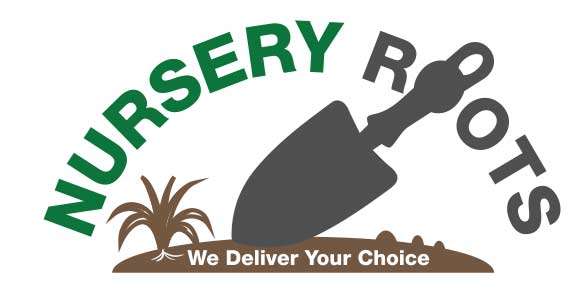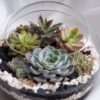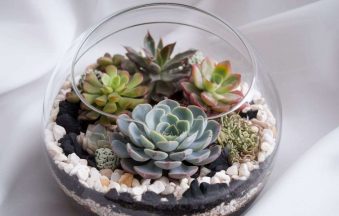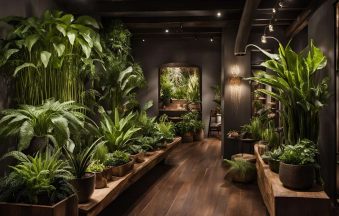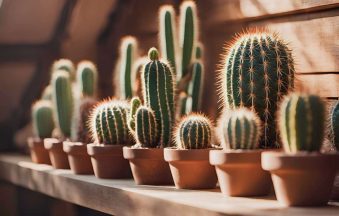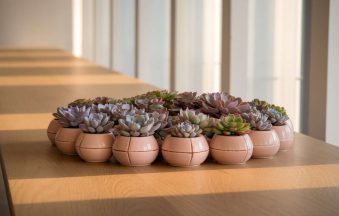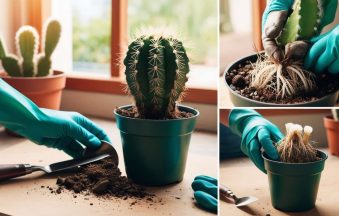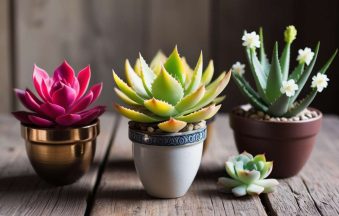How to Create a Low-Light Indoor Garden
Indoor gardens bring the beauty of nature inside our homes, creating a calm and refreshing atmosphere. However, many homes and offices lack direct sunlight, making it challenging to cultivate traditional plants. The good news is that low-light indoor gardens offer a fantastic alternative, perfect for spaces that don’t receive much natural light. This comprehensive guide will walk you through how to create a thriving low-light indoor garden with ease.
Why Choose a Low-Light Indoor Garden?
There are several compelling reasons to opt for a low-light indoor garden. First and foremost, these plants require minimal sunlight, making them perfect for rooms with limited exposure to direct sun. Whether it’s a dim hallway, a shaded corner, or an office without windows, low-light plants are designed to thrive in these conditions.
Moreover, low-light indoor gardens are easier to maintain than sun-loving plants. They don’t require daily watering or constant attention, making them perfect for busy individuals or those new to gardening. Lastly, many low-light plants are known for their air-purifying abilities, improving the quality of the air in your home or office while adding a touch of greenery to the space.
Understanding Low-Light Conditions
Before diving into plant selection, it’s essential to understand what qualifies as “low-light.” Many people mistakenly believe that low-light means no light at all, but that’s not the case. Low-light conditions are areas that receive indirect sunlight for part of the day or are illuminated by artificial light sources.
What Qualifies as Low-Light?
Low-light conditions are typically found in rooms that face north or in spaces that receive very little natural sunlight. These areas may be illuminated by ambient light or light reflected from walls, but they don’t experience direct sun exposure. If you can comfortably read a book in the space without artificial light, it’s likely a suitable spot for a low-light garden.
Differences Between Low-Light and No-Light
While low-light plants can survive in dim conditions, they still need some level of light to thrive. No-light environments, such as closets or completely dark rooms, will not support plant growth without the help of artificial lighting. Understanding this distinction is critical when setting up your indoor garden.
Best Plants for Low-Light Indoor Gardens
Not all plants can tolerate low-light conditions, but fortunately, several species are well-suited for these environments. The following are some of the best options for your low-light indoor garden:
Snake Plant (Sansevieria)
The Snake Plant, also known as Mother-in-Law’s Tongue, is one of the most resilient plants available. It can tolerate both low and bright light, making it a versatile option. Its long, upright leaves are perfect for adding height and structure to your indoor garden.
ZZ Plant (Zamioculcas zamiifolia)
The ZZ Plant is another fantastic option for low-light spaces. Known for its glossy, deep green leaves, this plant can survive in extremely dim conditions and is nearly impossible to kill. It requires little water and thrives on neglect.
Pothos (Epipremnum aureum)
Pothos is a trailing plant with heart-shaped leaves that can tolerate a wide range of light conditions. It’s perfect for hanging baskets or cascading over the edge of a bookshelf. Pothos can grow in both soil and water, making it a flexible addition to any indoor garden.
Cast Iron Plant (Aspidistra elatior)
As the name suggests, the Cast Iron Plant is incredibly tough. It can thrive in low-light conditions and requires minimal care. Its broad, dark green leaves make it an excellent choice for adding a touch of greenery to darker areas of your home.
Peace Lily (Spathiphyllum)
Peace Lilies are not only beautiful with their white blooms but also excellent at purifying the air. They can thrive in low-light environments, although they will produce more flowers with a bit more indirect light. Peace Lilies also help maintain humidity levels, making them ideal for indoor gardens.
Detailed Care Tips for Each Plant
Each of the above plants has slightly different care needs, but in general, low-light plants are low-maintenance. Here’s how to care for them:
Watering
The most common mistake when caring for low-light plants is overwatering. These plants don’t need frequent watering, as they are adapted to survive in dry conditions. Always allow the soil to dry out completely between waterings, and make sure your containers have proper drainage.
Lighting
While these plants can tolerate low-light conditions, they still benefit from some indirect sunlight. If possible, place them near a window that receives filtered light. If not, artificial lighting can supplement their needs.
Fertilization
Low-light plants don’t require frequent fertilization. During the growing season (spring and summer), you can feed them once a month with a balanced, water-soluble fertilizer. In the winter, when growth slows, you can reduce or skip fertilization altogether.
Soil
Using well-draining soil is crucial for low-light plants. Regular potting soil may retain too much moisture, leading to root rot. A soil mix designed for houseplants or succulents is ideal for preventing waterlogged roots.
Creating the Perfect Environment
To ensure your low-light garden thrives, you need to create an environment that mimics the plant’s natural habitat. Here are a few key factors to consider:
Temperature
Low-light plants generally prefer temperatures between 60°F to 75°F (15°C to 24°C). Keep your plants away from drafty windows, air conditioning vents, or heating units, as sudden temperature changes can stress them.
Humidity
Many low-light plants are native to tropical environments and prefer higher humidity levels. If your home is particularly dry, consider using a humidity tray or misting your plants to keep the air around them moist.
Airflow
Good airflow is essential for preventing mold and fungus growth. Ensure your plants have enough space between them for air to circulate freely, and avoid placing them in stuffy or enclosed area
Choosing the Right Containers for Your Garden
The type of container you use can significantly impact the health of your plants. Consider the following factors when selecting pots:
Drainage
Always choose containers with drainage holes. Proper drainage is essential for preventing water from pooling at the bottom of the pot and causing root rot.
Size
Pick a container that fits the size of your plant. If the pot is too large, the soil may retain excess water, leading to soggy roots. Conversely, a pot that is too small can restrict root growth.
Material
Terracotta pots are a popular choice because they are porous and allow excess moisture to evaporate. However, plastic pots are lighter and retain moisture better, which can be beneficial for low-light plants that don’t require frequent watering.
How to Arrange Your Plants for Optimal Growth
The arrangement of your plants can influence their growth and the overall aesthetic of your indoor garden. Here are a few tips for arranging plants in low-light conditions:
Grouping by Humidity Needs
Plants with similar humidity needs should be grouped together to create a microenvironment. For example, tropical plants like Peace Lilies and Pothos thrive in humid environments, so placing them near each other can help maintain the moisture levels they need.
Vertical Arrangements
If you’re short on space, consider vertical arrangements. Shelving units or plant stands can help you maximize space, and trailing plants like Pothos can be placed on higher shelves to cascade down for a beautiful display.
Rotate for Even Growth
Rotate your plants every few weeks to ensure that all sides receive equal light exposure. This helps prevent uneven growth, particularly in low-light environments where every bit of light counts.
Common Problems in Low-Light Indoor Gardens
Even with the right care, low-light gardens can encounter a few common problems. Knowing how to identify and address these issues will help your plants thrive.
Root Rot
Overwatering is the most frequent cause of root rot. In low-light conditions, plants use less water, so it’s crucial to let the soil dry out between waterings. If you notice yellowing leaves and mushy roots, your plant may have root rot. To save it, remove the affected roots and repot the plant in fresh, well-draining soil.
Pests
Pests such as spider mites, aphids, and fungus gnats can affect indoor plants. Regularly inspect your plants for any signs of infestation, such as discolored leaves or tiny webs. If you detect pests, treat the plant with insecticidal soap or neem oil.
Stunted Growth
Plants in low-light environments may experience slower growth. This is normal, as they are not receiving as much energy from sunlight. However, if your plant is significantly stunted, it may need more light, better soil, or fertilizer.
Best Fertilizers for Low-Light Plants
Low-light plants don’t need as much fertilizer as their sun-loving counterparts, but occasional feeding can help them stay healthy.
Organic vs. Synthetic Fertilizers
Organic fertilizers, such as compost or worm castings, are ideal for low-light plants as they release nutrients slowly and improve soil structure. Synthetic fertilizers are faster-acting but can cause a buildup of salts in the soil, which may harm your plants in the long run.
How Often to Fertilize
During the growing season (spring and summer), fertilize your low-light plants once a month with a diluted liquid fertilizer. In the winter, when growth slows, reduce feeding to every two months or stop altogether.
How to Use Artificial Light for Low-Light Gardens
If your indoor space lacks natural light, artificial lighting can help your plants thrive. Here’s how to use it effectively:
Types of Artificial Lights
There are several types of artificial lights that can supplement low-light conditions. LED grow lights are the most energy-efficient and can be adjusted to emit the right spectrum for plant growth. Fluorescent lights are also a good option, though they consume more power than LEDs.
Positioning Lights Correctly
Position your artificial lights about 6–12 inches above your plants to mimic natural sunlight. Keep the lights on for 12–16 hours a day to provide your plants with enough energy for photosynthesis.
Decorating with Low-Light Plants
Low-light plants are not only functional but can also enhance the décor of your home. Here’s how to incorporate them into your design:
Aesthetic Appeal
Low-light plants like Snake Plants and Peace Lilies have striking shapes and textures that can add a touch of elegance to any room. Place them in decorative pots that complement your interior design to create a cohesive look.
Color and Texture Variety
Mix plants with different colors and textures to create visual interest. For example, the deep green of a ZZ Plant contrasts beautifully with the glossy leaves of a Pothos, creating a lush and vibrant display.
Sustainable Practices for Your Indoor Garden
Sustainability is an important consideration when maintaining an indoor garden. Here are some eco-friendly practices to keep in mind:
Water Conservation
Low-light plants don’t require frequent watering, but when you do water them, consider collecting rainwater or reusing water from your home (like cooled water from boiling vegetables) to reduce waste.
Using Eco-Friendly Products
Choose organic fertilizers and pest control methods to avoid introducing harmful chemicals into your home environment. Composting plant trimmings and leaves is another great way to reduce waste and nourish your garden.
